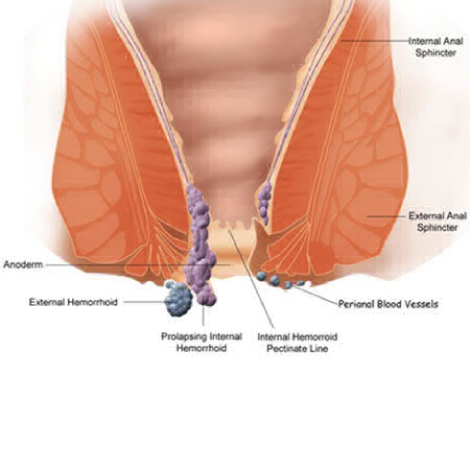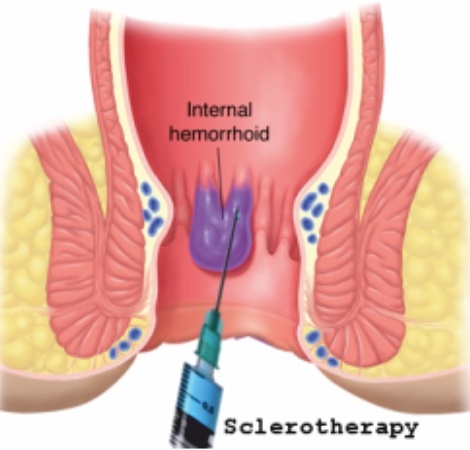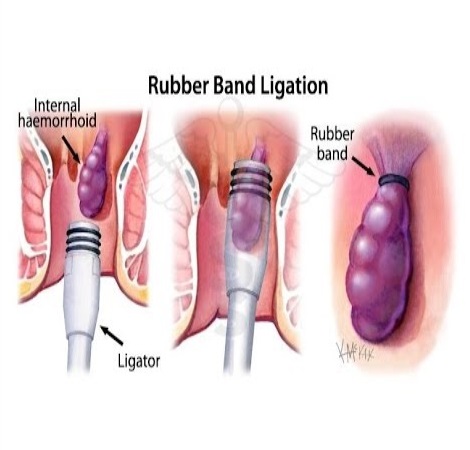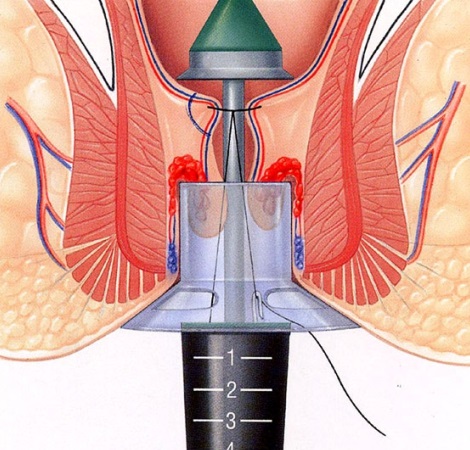Piles Treatment
Laser Surgery For Piles
Treatment can help significantly reduce the discomfort and itching that many patients experience. Laser energy is delivered by optical fiber directly to hemorrhoidal nodes and they will obliterate from inside and this will help to preserve mucosa and sphinter structure to an extremely high precision. Laser energy is used to close off the blood supply nourishing the abnormal growth. The laser energy induce destruction of the venous epithelium and simultaneous obliteration of the hemorrhoidal pile by a shrinkage effect.
Advantage of using laser compare to conventional surgery, fibrotic reconstruction generates new connective tissue, which ensures that the mocosa adheres to the underlaying tissue, This also prevents the occurrence or recurrence of a prolapsed. Surgical procedure can be executed in only a few minutes.

Injection Therapy
A treatment called sclerotherapy may be used as an alternative to banding.
During sclerotherapy, a chemical solution is injected into the blood vessels in your back passage. This relieves pain by numbing the nerve endings at the site of the injection.
It also hardens the tissue of the haemorrhoid so a scar is formed. After about 4 to 6 weeks, the haemorrhoid should decrease in size or shrivel up.
You should avoid strenuous exercise for the rest of the day after having the injection.
You may experience minor pain for a while and may bleed a little. You should be able to resume normal activities, including work, the day after the procedure.

Barron’s Band Application Therapy
Borron’s band application is a procedure in which a small imported band is applied at the base of piles with the help of piles gun.
It will stop blood supply of piles mass and piles shrivel and die within 2-5 day.
It is most successful treatment for fistula.

Stapler Surgery
The stapled hemorrhoidectomy (“stapled hemorrhoidopexy”) is a newer surgical technique that is rapidly becoming the treatment of choice for third-degree hemorrhoids. This surgery does not remove the hemorrhoids, but rather the expanded hemorrhoidal supporting tissue that has allowed the hemorrhoids to slip downward.
Stapled hemorrhoidectomy is less painful and faster than a traditional hemorrhoidectomy. It takes approximately 30 minutes to perform.
Benefits
- Less pain
- Less blood loss
- Faster recovery
- Shorter hospital stay
- Smaller incisions
- Highest accuracy

Steps in Stapler Surgery
- A circular, hollow tube is inserted into the anal canal and a suture (a long thread) is placed through it and woven circumferentially within the anal canal above the internal hemorrhoids.
- The ends of the suture are brought out of the anus through the hollow tube.
- The stapler is placed through the hollow tube and the ends of the suture are pulled, expanding the hemorrhoidal supporting tissue into the jaws of the stapler.
- The hemorrhoidal cushions are pulled back up into their normal position within the anal canal.
- The stapler is then fired, cutting off the circumferential ring of expanded hemorrhoidal supporting tissue trapped within the stapler.
- At the same time staples bring together the upper and lower edges of the cut tissue.

